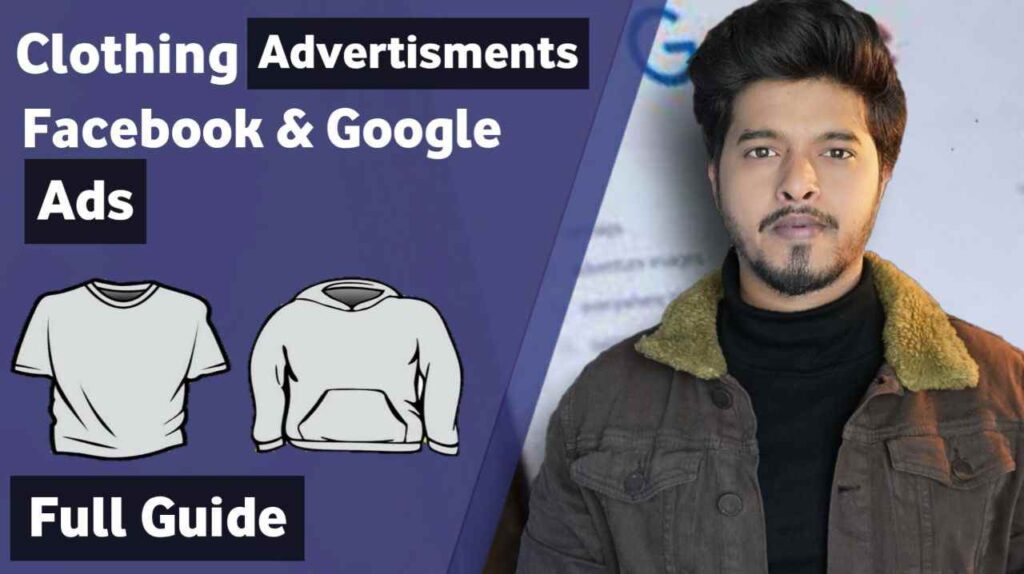
Clothing advertisements are important if you want to scale your clothing business. Social media platforms like Facebook ads and Google ads have become indispensable tools for businesses, especially in clothing advertisement campaigns. With over a billion active users on Facebook, Google offers vast potential for targeting your ideal audience. A well-executed Facebook Ads and Google Ads campaign can boost brand visibility, generate sales, and increase engagement with potential customers. In this guide, Bloggingwala will take you deep into how to run a successful clothing advertisements campaign on Facebook ads and Google ads.
Topics covered in this Article
- 1 Why Facebook Ads for Clothing Advertisements?
- 2 Tips for a Successful Clothing Advertisement Campaign.
- 3 Steps to Launching a Clothing Advertisement Campaign on Facebook Ads.
- 4 Google Ads for clothing advertisements.
- 5 Facebook Ads for clothing advertisements.
- 6 Google Ads vs Facebook Ads for Clothing Advertising: Which is Best?
- 7 Which platform is best for clothing advertisements?
- 8 Key Differences Between Google Ads and Facebook Ads.
- 9 Point of view :
Why Facebook Ads for Clothing Advertisements?
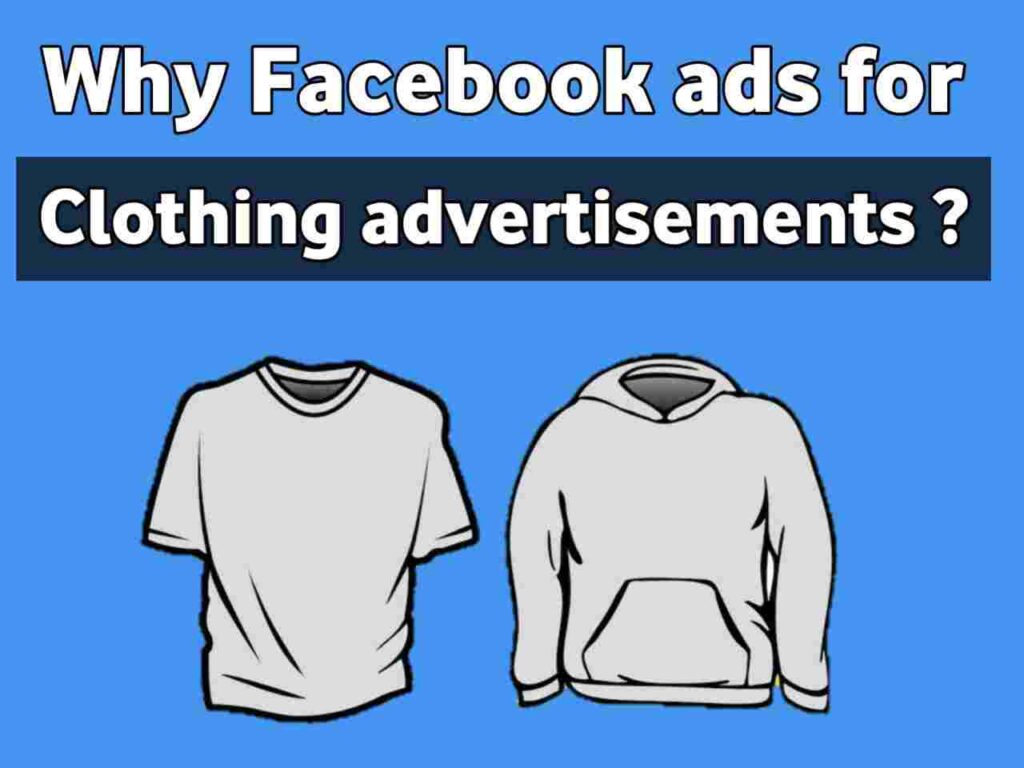
FacebookAds is an excellent tool for clothing advertisements for clothing brands due to its robust targeting capabilities. Here are some reasons why:
- Massive Audience Reach: With billions of users, you can reach a diverse audience globally.
- Advanced Targeting Options: Facebook allows you to target based on interests, behaviors, demographics, and even people who have interacted with your content.
- Visual Appeal: Clothing is a visual product, and Facebook’s image and video ad formats make it easy to showcase your designs.
- Cost-Effective: Whether you’re a small startup or an established brand, Facebook ads can fit various budgets, offering high ROI when managed effectively.
Tips for a Successful Clothing Advertisement Campaign.
- Leverage User-Generated Content: Encourage your customers to post pictures of themselves wearing your clothes and use this in your ads. It’s more relatable and authentic.
- A/B Testing: Test different versions of your ads to see which performs better. For example, you can test different images, copy, or audiences to optimize results.
- Retargeting: Use retargeting ads to bring back visitors who viewed products but didn’t complete a purchase.
- Seasonal Promotions: Align your ad campaigns with seasonal sales, holidays, or special events to increase relevance and engagement.
Steps to Launching a Clothing Advertisement Campaign on Facebook Ads.
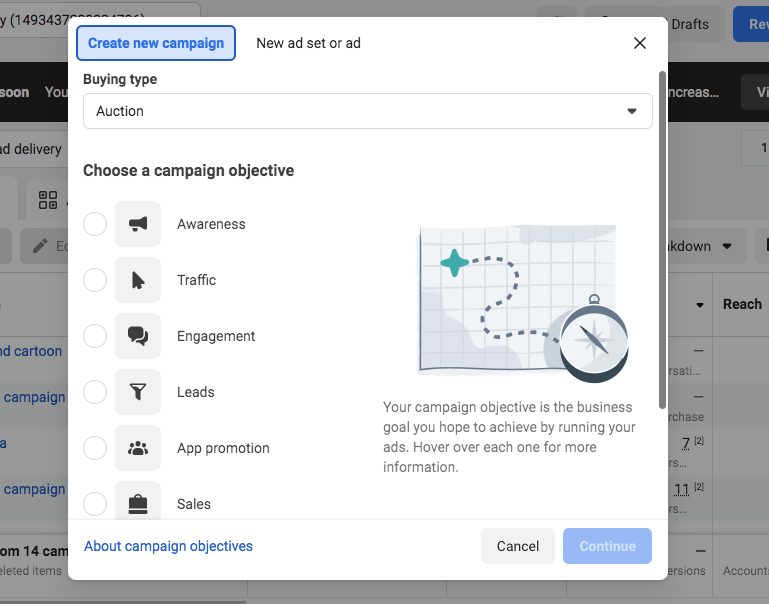
1. Define Your Campaign Objective
Before jumping into the clothing advertisements, you need to establish a clear goal for your campaign. Facebook offers a range of campaign objectives, but for a clothing brand, you may want to consider these:
- Brand Awareness: If you’re launching a new clothing line or entering a new market, this option helps build recognition.
- Traffic: This option is ideal if you want to drive users to your online store or landing page.
- Conversions: If your goal is direct sales, setting the objective to conversions will optimize the campaign towards purchases.
Once you’ve defined your objective, you’ll be able to align the rest of your campaign accordingly.
2. Audience Targeting: Finding the Right Customers

Facebook’s sophisticated targeting features allow you to reach the right audience for your clothing ads. Here’s how to make the most of these tools:
- Interest Targeting: You can target users based on their interest in fashion, clothing, and related topics.
- Behavioral Targeting: Target customers who have previously engaged with your brand or shown intent to purchase clothing items.
- Lookalike Audiences: Create a lookalike audience based on existing customers who have bought from you or engaged with your website.
- Custom Audiences: Upload your email list of existing customers or retarget users who visited your website but didn’t make a purchase.
This ability to segment your audience is what makes Facebook ads so effective for fashion brands.
3. Ad Creatives: Designing Eye-Catching Ads

Your ad creative will play a significant role in the success of your campaign. Since clothing is highly visual, you’ll need to focus on high-quality imagery and compelling video content.
- Single Image Ads: A clear, high-quality image showcasing your product is essential. Make sure the clothing is presented in an attractive setting and that the style matches your target audience.
- Video Ads: Videos are extremely effective for clothing campaigns. They allow you to showcase your products in motion, highlighting the fit, material, and look in a more dynamic way.
- Carousel Ads: This format allows you to display multiple images or videos within one ad. For a clothing line, you can use a carousel to showcase different items or outfits.
- Copywriting Tips: Your copy should be concise, compelling, and action-oriented. Use strong CTAs (e.g., “Shop Now”, “Limited Offer”) and highlight key selling points such as discounts or special materials used in the clothing.
4. Budgeting and Bidding Strategy

Facebook allows for flexible budgeting options that suit both small and large-scale campaigns. You can set a daily budget or a lifetime budget depending on how you want to allocate your resources.
- CPC (Cost per Click): Ideal for driving traffic to your website.
- CPM (Cost per 1,000 Impressions): Best for increasing brand visibility.
- CPI (Cost per Install): If you’re promoting a shopping app for your clothing line.
Once you determine your goal, Facebook’s algorithm will help you optimize your budget to meet your targets.
5. Ad Placement
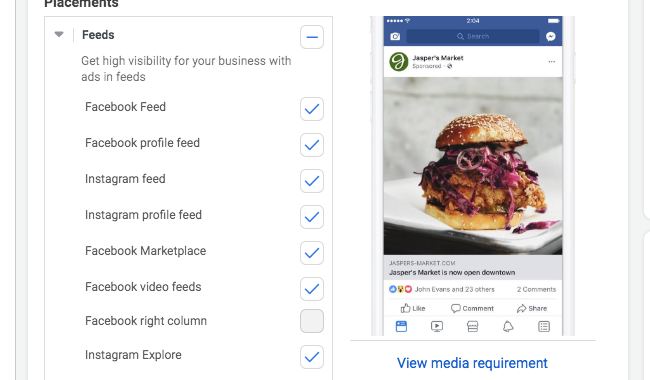
Facebook offers multiple platforms for ad placements, including:
- Facebook Feed: The standard placement where your ads will appear in users’ feeds.
- Instagram Feed: Since Facebook owns Instagram, your ads can also appear on Instagram, which is particularly effective for clothing due to the platform’s visual nature.
- Stories: Ads in Facebook and Instagram stories are full-screen and engage users quickly, making them ideal for flash sales or new collection drops.
Using automatic placements is a good strategy for beginners, as Facebook optimizes the placement based on where your ads perform best.
6. Tracking and Measuring Campaign Performance
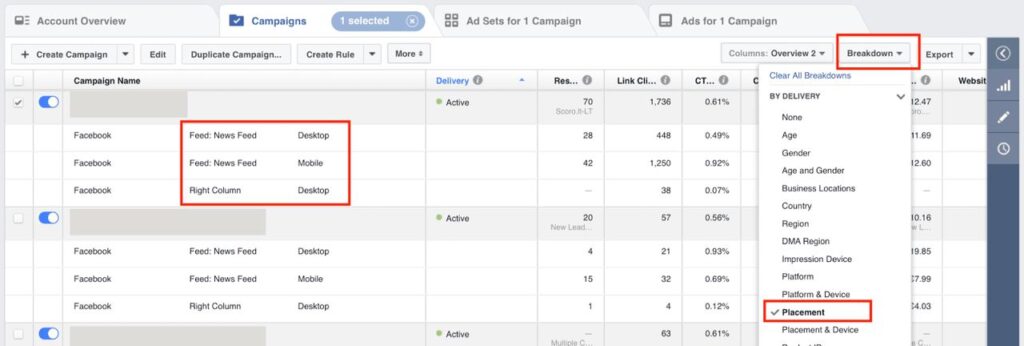
Once your campaign is live, it’s crucial to track its performance. Here are some key metrics to monitor:
- Click-Through Rate (CTR): Measures how many people clicked on your ad after seeing it.
- Conversion Rate: The percentage of people who made a purchase after clicking through to your website.
- Cost Per Conversion: How much you’re spending to acquire a customer.
- Return on Ad Spend (ROAS): This metric tells you how much revenue you’re earning for each dollar spent on advertising.
By monitoring these metrics, you can make data-driven decisions to optimize your campaign further. For instance, if your CTR is low, you may need to tweak your creative. If your conversion rate is low, you may need to rework your landing page or target.
Google Ads for clothing advertisements.
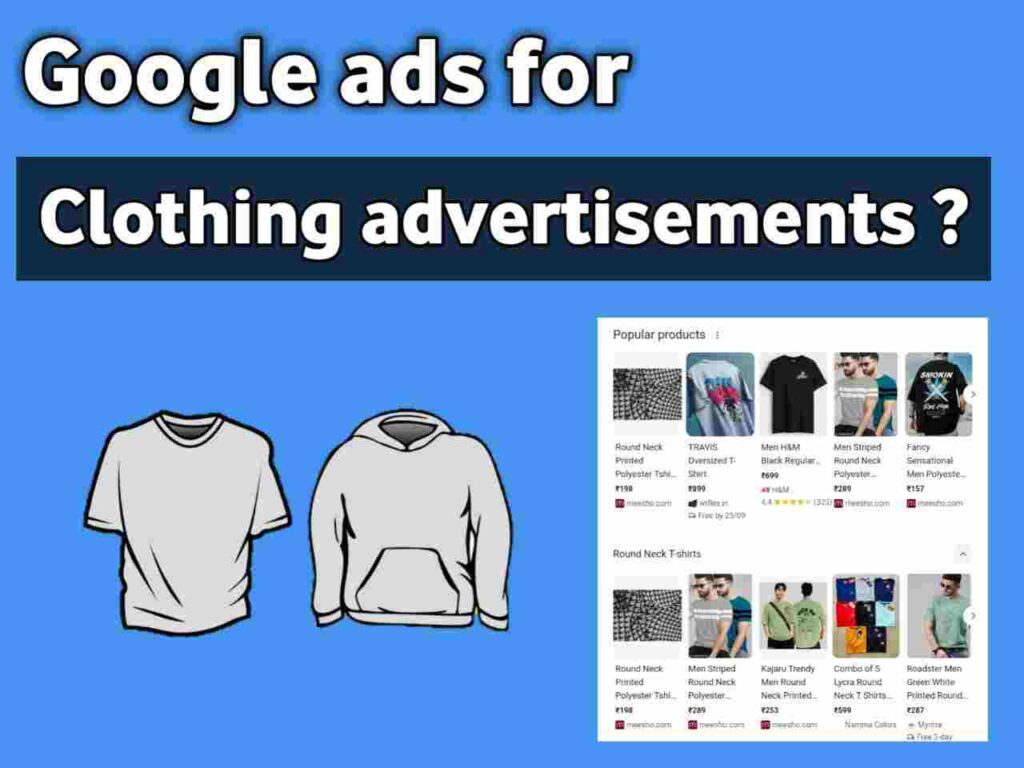
Overview of Google Ads
Google Ads operates primarily through search intent, meaning your ads appear when users actively search for relevant terms like “buy men’s t-shirts” or “affordable summer dresses.” Google Ads also provides display ads, video ads on YouTube, and shopping ads that can showcase your clothing directly in search results.
Advantages of Google Ads
- Search Intent: Google users are usually searching for something specific, meaning they already have a high intent to purchase. This makes Google Ads ideal for targeting users who are actively looking for clothing products.
- Wide Reach: Google is the largest search engine globally, so advertising on this platform can help you tap into an enormous audience.
- Google Shopping Ads: For clothing brands, Google Shopping Ads are a powerful tool. They allow users to see product images, prices, and descriptions directly on the search page, increasing the chances of a click-through.
- Higher ROI for Specific Keywords: If your brand specializes in certain types of clothing, bidding on specific keywords can lead to higher conversion rates because your ads will reach people who are actively searching for your products.
Disadvantages of Google Ads
- High Competition for Keywords: Popular clothing-related keywords can be highly competitive and expensive to bid on, which might limit your reach if you’re on a tight budget.
- Less Visual Appeal: Unlike Facebook, Google Ads are often text-based (except for Google Shopping), which might make it difficult to visually showcase your clothing line unless you invest in display ads.
Facebook Ads for clothing advertisements.
Overview of Facebook Ads
Facebook Ads allow you to create visually appealing ads, including images, videos, and carousel ads, which are perfect for showcasing clothing. Unlike Google Ads, Facebook’s targeting is based on user behavior, demographics, and interests rather than search intent.
Advantages of Facebook Ads
- Highly Visual Ads: Clothing is a highly visual product, and Facebook Ads excel in delivering eye-catching image and video ads that allow you to showcase your designs effectively.
- Precise Audience Targeting: Facebook’s detailed targeting options let you reach people based on their interests, online behaviors, and demographics. For instance, you can target people who have shown interest in fashion brands, follow influencers, or have visited your website.
- Lookalike Audiences: You can create lookalike audiences based on your existing customers, allowing you to reach potential buyers who share similar behaviors and interests.
- Cost-Effective for Awareness Campaigns: Facebook Ads are usually more cost-effective for campaigns focused on brand awareness and engagement, particularly for smaller clothing brands with limited budgets.
Disadvantages of Facebook Ads
- Lower Purchase Intent: Facebook users are not necessarily in “buying mode” when they come across your ads. They may be scrolling through their newsfeed without actively searching for products, so conversion rates might be lower compared to Google Ads.
- Ad Fatigue: Since Facebook Ads are highly visual and frequently appear in users’ feeds, there is a risk of ad fatigue. Users might grow tired of seeing the same ads repeatedly, leading to diminishing returns over time.
- Limited Search Intent: Unlike Google, Facebook does not capture search intent. This means people might see your ad without having any intent to buy clothing at that moment.
Google Ads vs Facebook Ads for Clothing Advertising: Which is Best?
When it comes to advertising your clothing brand online, both Google Ads and Facebook Ads offer powerful tools to help you reach your target audience. However, deciding which platform is best for your clothing brand depends on various factors like your goals, budget, and audience. In this article, we will explore the strengths and weaknesses of both platforms to help you determine which one is the better choice for your clothing advertising campaign.
Which platform is best for clothing advertisements?
- Choose Google ads if:
- You want to capture customers who are actively searching for clothing products.
- You’re running a sale or have specific product lines that users are likely to search for.
- You have a budget for competitive keywords or want to use Google Shopping Ads to display your products.
- Choose Facebook ads if:
- You’re looking to build brand awareness or create a buzz around new collections.
- Your target audience is highly visual and engages well with images or videos.
- You want to leverage detailed audience targeting to reach people based on their fashion interests or behaviors.
Key Differences Between Google Ads and Facebook Ads.
| Feature | Google ads | Facebook ads |
| Targeting | Based on search intent | Based on interests, behaviors, and demographics |
| Ad format | Text, Shopping Ads, Display Ads, YouTube Ads | Visual (Images, Videos, Carousels) |
| Audiance intent | High (Users actively searching for products) | Lower (Users may not be in buying mode) |
| Cost | Typically higher CPC for competitive keywords | Cost-effective for awareness and engagement |
| Ideal For | Direct sales, search-based campaigns | Brand awareness, engaging visual campaigns |
| Best Ad Types for Clothing | Google Shopping Ads, Display Ads | Image Ads, Video Ads, Carousel Ads |
Point of view :
Both Google Ads and Facebook Ads have their strengths when it comes to clothing advertisements, but the best platform depends on your specific goals and budget. If you’re focused on driving direct sales from people actively searching for clothing, Google Ads might be your best bet. However, if your priority is creating visually engaging content and building a strong brand presence, Facebook Ads can be more effective.
For most clothing brands, a combination of both platforms is often the most effective strategy. Using Google Ads to target high-intent users while leveraging Facebook Ads for visual storytelling can provide a balanced approach to maximizing your advertising efforts.

